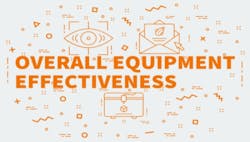Decrease global shortages by increasing local performance capacities
During the last year and a half, the pandemic has impacted manufacturing and caused inventory scarcities worldwide. As the economy reopens and there is a strong demand for consumption of goods, productivity is somewhat reduced and manufacturing is still catching up from being in survival mode and focused on supplying essential goods.
Optimizing local plant performance contributes to resolving demand issues and reduces the potential for inflation. While inventories in chemicals are increasing, they are not at the level they were before the pandemic.
Raw materials and supply shortages are affecting all manufacturing sectors like chemical, automotive, electronics, healthcare, and even food. Shortages in these supply chains cause delivery delays for essential goods and medicines. They can cause inflation and give cause to hasten production.
Problems dealing with shortages aren’t occurring due to any one particular problem but rather occur like the domino effect—one issue occurs, gets resolved and then some other issue arises.
The construction of new plants to speed production won’t necessarily work because of the time it takes to build them and outfit them with all the systems needed to run plants. The better, faster solution in most instances is to optimize and retrofit existing plants to run at maximum capacity where people, processes, equipment, and technology work together seamlessly to achieve optimal productivity.
Usually, reasonably sized improvement projects are agile enough to address changes in demand. Raw material costs, prices of manufactured products and other changing parameters often spark new ideas and approaches to solving complex challenges—think new production processes, the use of alternative materials that are cheaper or more available or even seek alternate supply chains. It basically gets people thinking out of the box.
The digital transformation
Access to more accurate figures and data, thanks in part to digital transformation, has proven to optimize processing plants’ productivity and enable transparent and unified asset-utilization measurements for management and plant-floor personnel. Asset utilization, one key performance Indicator, or KPI, can typically be delivered for a sole plant or the company’s whole network of plants worldwide.
Overall equipment effectiveness (OEE), another KPI, reviews the impact of all work processes that affect manufacturing output; we are talking about issues dealing with demand generation and planning all the way through to operations and asset maintenance.
Unlock the hidden plant
When trying to maximize production, there can be unused capacity existing because of operational inefficiencies—dubbed the “hidden plant.” Addressing production and supply bottlenecks in a more timely manner means that productivity can be maximized rather than having to build new capacity.
Typically, the real-time view of production flows and asset utilization are not available company-wide, and an OEE strategy can help bring transparency from the plant floor to corporate management. OEE enables transparent reporting of failures and analysis for the reasons of failure.
Asset utilization
Batch plants and continuous-process plants benefit from optimization improvements where failures are identified and the reasons why they occurred are uncovered. Failures can occur from improperly maintaining equipment or not communicating a perceived problem from one shift operating the equipment to the next shift. Or also consider site-wide issues caused by internal logistics. A whole host of variables can cause failures. Cooperation between all parties (shifts, teams, management), making sure accurate data is used, and asset utilization (often measured with OEE) are all factored into the equation for improving productivity.
The value of visualization
Visual management is an efficient management approach to engage people on the shop floor to improve utilization of production capacity. Visual management empowers frontline workers with accurate data so that they can make data-driven decisions and oversee the visualization of batch cycle times, process variations and OEE losses.
Visualization promotes transparency and accountability among teams, enabling more improvements due to more access to data plant-wide. In instances when personnel work remotely, the KPI and associated targets and actual results are required to be accessible onsite as well as remotely.
Sometimes less is more with reporting
After OEE is methodically applied throughout a single plant or network of plants, it promises more accurate and transparent reporting. It allows IIoT data and systems data to be easily gathered and analyzed by utilizing the right digital solutions. OEE has become a formidable measurement standard; applying it accurately helps to pinpoint key improvements in manufacturing processes to accelerate productivity.
By applying OEE strategies and aligning all disciplines in a single plant, OEE calculations show that a single site can achieve up to 15% in production increases exponentially.
By Andreas Eschbach, CEO of eschbach
